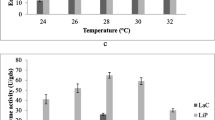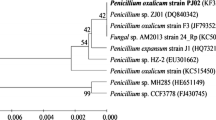Abstract
The ligninolytic white rot fungus Phanerochaete chrysosporium, holds good promise as a biological treatment tool due to its ability to produce the lignin peroxidase enzyme which has the potential to degrade a wide variety of hazardous compounds. The effective application of this technique requires optimisation of the process variables to maximise the enzyme production. Response surface methodology was applied to determine the effects of glucose, ammonium tartarate and ferrous sulphate and their mutual interactions on lignin peroxidase production. With a view to simultaneously reducing the number of experiments and obtaining more information on the mutual interactions between the variables, a 23 full-factorial central composite experimental design was adopted. The experimental data were fitted to a second order polynomial equation using multiple regression analysis and also analysed by appropriate statistical methods. Solving the regression equation using the multi-stage monte-carlo optimisation techniques, the optimum process conditions for enhanced production of lignin peroxidase were obtained as: glucose 0.9728 kg/m3, ammonium tartarate 0.288 kg/m3, and ferrous sulphate 0.097 kg/m3.
Similar content being viewed by others
Author information
Authors and Affiliations
Additional information
Received: 28 December 1998
Rights and permissions
About this article
Cite this article
Manimekalai, R., Swaminathan, T. Optimisation of lignin peroxidase production from Phanerochaete chrysosporium using response surface methodology. Bioprocess Engineering 21, 465–468 (1999). https://doi.org/10.1007/PL00009085
Issue Date:
DOI: https://doi.org/10.1007/PL00009085




